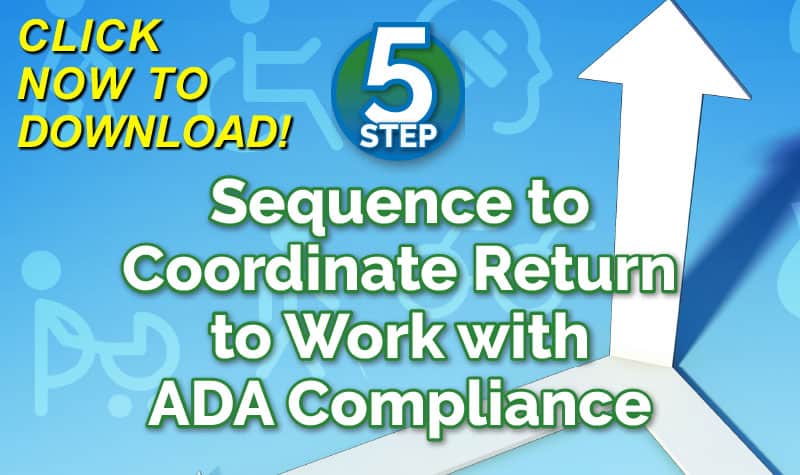The American workforce is getting older. The post World War II baby boomers are now 46 to 64 years old. In 1992 the percentage of the workforce 55 years old and older was 11.8%. In 2012 it is projected that 19.1% of the workforce will be 55 years old and older and will be more than 31 million workers.
In some instances the older employee is working longer and delaying retirement simply because they want to. In other cases the older employee is delaying retirement because of financial concerns. For more information http www.ReduceYour WorkersComp.com
Work Comp Cost
The employee’s ages are not a factor in setting the initial workers’ compensation premium for an employer. The basic premium is determined by the number of employees and the employees’ job classifications.
The age factor comes into play with the experience modification rate (EMR). If you have more older employees than average and have not taken steps to reduce the number of work comp injuries among your older employees, your EMR is higher than average and your work comp premium is higher than average.
Lower Frequency
Various studies show older employees incur fewer on the job injuries than younger employees do. The experienced older employees make better work related decisions reducing their exposure to injury. Older employees are also less likely to take chances and are more likely to follow safety procedures and to heed safety warnings.
Higher Severity
Older employees have overall lower physical abilities than younger employees making them more susceptible to injuries. Older employees are more brittle, have less elasticity, and will have more degenerative type injuries. Older employees take longer to heal then younger employees with the same type of injury. All these factors add up to higher cost per work comp claim for the older employee.
Overall Cost is the Same
Younger employees are less experienced at their jobs and have more work related injuries than older employees. While the average cost of the work comp claims of younger employees is lower than the average cost of the claims for older employees, the higher frequency of claims for the younger employees makes the overall work comp approximately the same for older employees and younger employees.
The WC Claims of Older Employees
Older employees have a greater propensity for knee problems, rotator cuff conditions, and carpal tunnel. Cervical and lumbar problems are common in both older and younger employees. The nature of these injuries makes them more costly both in terms of medical care and time lost from work. The recovery time is longer in the older employee and the percentage of permanent disability these injuries cause in older employees is greater.
Safety for the Older Employee
The smart employer will already have in place a comprehensive safety program to protect all employees. However, there are specific steps the employer can take to improve safety and reduce the likelihood of injuries to older employees.
1. Older employees have decreased depth perception. To prevent falls make sure aisles, walkways and steps are well lit. Use color edge strips on steps to assist employees in distinguishing one step from the next.
2. Older employee’s reaction time is slower resulting in more falls than younger employee’s experience. Make sure all flooring is in good condition and all steps have handrails.
3. Older employees, especially those over 60, have a difficult time with transitioning from dark areas to light areas. Lighting should be arranged to allow for a gradual transition from light to dark areas or the reverse.
4. Older employees are more vulnerable to noise. Controlling and reducing the noise level reduces the number of hearing loss claims, plus will allow for better concentration, resulting in fewer accidents.
These safety changes benefit all employees but provide greater reduction in work comp cost from the older employees.
Ergonomics for the Older Employee
There are also ergonomic changes that can be implemented to reduce the likelihood of injuries that aggravate naturally occurring conditions such as degenerative disc disease, arthritis, cardiopulmonary decline, and degenerative changes in the shoulders, wrists, and knees.
1. Eliminate or reduce, as much as possible, work positions requiring kneeling and squatting. This reduces the number of injuries to the knees.
2. Eliminate or reduce, as much as possible, work positions requiring lifting above the shoulders to reduce the number of injuries to the rotator cuffs, shoulder muscles and tendons.
3. Arrange for lifting assistance or for a reduction in the amount of weight older employees must lift as they have less muscle mass and more degenerative changes.
4. Provide training or equipment to prevent awkward positioning of body parts as the excessive stress on the body increases the risk of injury. Ergonomically correct furniture and equipment prevents strains due to excessive stress or pressure on body parts.
5. Position work tasks at a comfortable height to prevent the employee from having to bend over to perform the task. This will reduce the number of stress injuries to the back.
These ergonomic suggestions benefit all employees but provide a greater cost savings among older employees. (workersxzcompxzkit)
Summary
Older employees have more experience, take less risk and have fewer work comp accidents then younger employees. When older employees do have accidents, the work comp cost is higher due to the physical changes we all experience as we grow older. Employers can protect themselves from higher work comp cost by providing a safe and ergonomically sound working environment.
Author Rebecca Shafer, J.D. Risk Consultant, President, Amaxx Risks Solutions, Inc. has worked successfully for 20 years with many industries to reduce Workers’ Compensation costs, including airlines, healthcare, manufacturing, printing/publishing, pharmaceuticals, retail, hospitality and manufacturing. She can be contacted at: Becki@ReduceYourWorkersComp.com or 860-553-6604.
Podcast/Webcast: Occupational Health Strategies
Click Here:
Click Here:
WC Calculator: http://www.reduceyourworkerscomp.com/calculator.php
Do not use this information without independent verification. All state laws vary. You should consult with your insurance broker or agent about workers' comp issues.
© 2010 Amaxx Risk Solutions, Inc. All rights reserved under International Copyright Law. If you would like permission to reprint this material, contact Info@ ReduceYourWorkersComp.com.
















